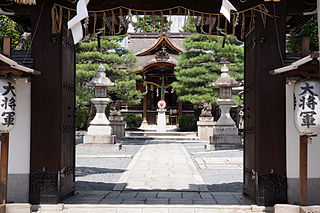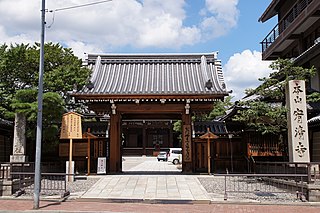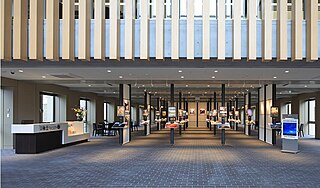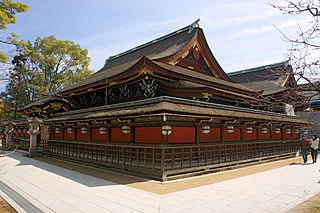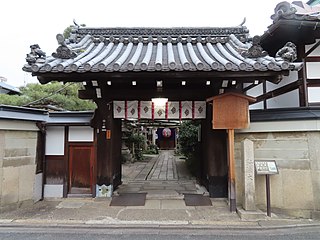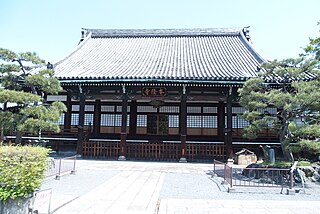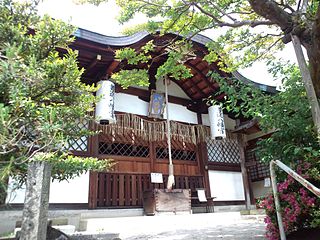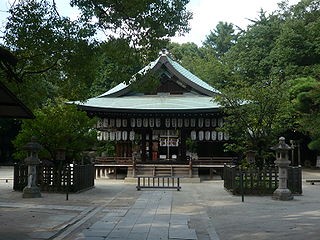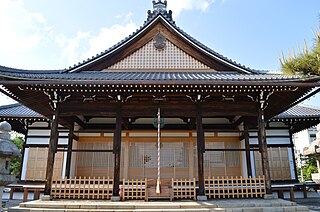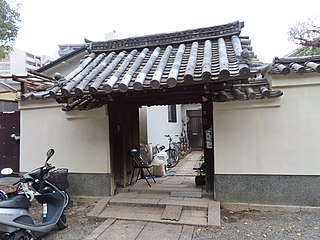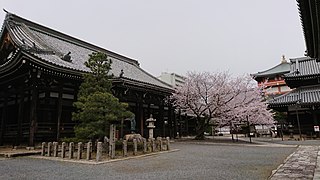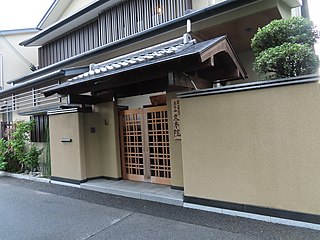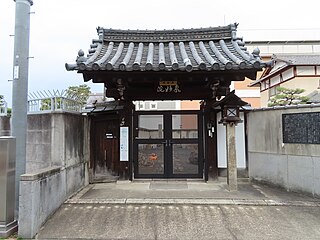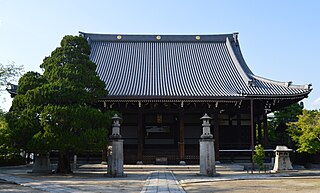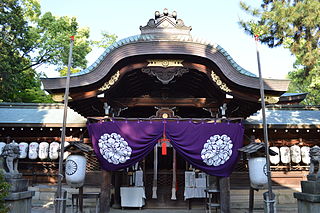Self-guided Sightseeing Tour #17 in Kyoto, Japan
Legend
Guided Free Walking Tours
Book free guided walking tours in Kyoto.
Guided Sightseeing Tours
Book guided sightseeing tours and activities in Kyoto.
Tour Facts
7.9 km
65 m
Experience Kyoto in Japan in a whole new way with our free self-guided sightseeing tour. This site not only offers you practical information and insider tips, but also a rich variety of activities and sights you shouldn't miss. Whether you love art and culture, want to explore historical sites or simply want to experience the vibrant atmosphere of a lively city - you'll find everything you need for your personal adventure here.
Activities in KyotoIndividual Sights in KyotoSight 1: 櫻谷文庫(旧木島櫻谷家住宅)
Sakuratani Bunko is located in Kita-ku, Kyoto, and was established on March 25, 1940 (Showa 15) for the purpose of preserving and exhibiting the former residence and art room of the Japan painter Kijima Sakuratani (Kijima Sakuratani, 1877-1938), who was active from the end of the Meiji era to the early Showa period, as well as the collection of Sakuradani, as well as art researchers and artists. In 2013, it was approved as a public interest incorporated foundation Sakuratani Bunko. It is located in Kinugasa Tochi-in, Kyoto, which was called "Painter Village" before the war.
Sight 2: Daishogun Hachi Shrine
Daishogun Hachijinja is a shrine located in Kamigyo-ku, Kyoto. The main deity is the Rustic Son. The original priest was a great general. The name of the shrine, "Eight Shrines," comes from the place where it enshrines the Eight Generals, the calendar god of the Yin-Yang Way, and later it also overlapped with the meaning of the Eight Pillars of the Son God of the Rustic Spirit.
Sight 3: 宥清寺
Yuseiji is the head temple of the Honmon Butsuryu sect located in Kamigyo Ward, Kyoto City. Its mountain name was originally Aoyagiyama, but is now Honmon Butsuriyama. The main object of worship is the Da Mandala of the Ten Realms. It is the oldest Nichiren sect temple in the Kansai region.
Sight 4: 京都 佛立ミュージアム
Kyoto Buddhist Museum is an art museum located in Kamigyo-ku, Kyoto City, Kyoto Prefecture.
Sight 5: Kitano Tenman Shrine
Kitano Tenmangū is a Shinto shrine in Kamigyō-ku, Kyoto, Japan.
Sight 6: Senbonshakado Daihoon-ji Temple
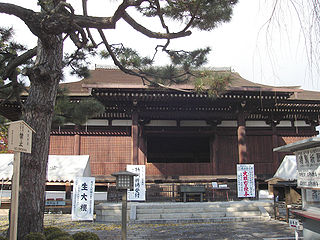
Daihōon-ji (大報恩寺) is a Buddhist temple in Kamigyō-ku, Kyoto, Japan. It is affiliated with Shingon-shū Chizan-ha Buddhism. Its main hall or Senbon Shakadō (千本釈迦堂) is a National Treasure of Japan.
Sight 7: 上善寺
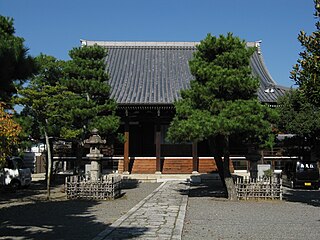
Jozenji Temple is a temple of the Jodo sect located in Higashi-iri, Kuramaguchi-tsuji-cho, Kita-ku, Kyoto.
Sight 8: 石像寺

Shakuzoji Temple is a temple of the Pure Land sect located in Kamigyo-ku, Kyoto. The name of the mountain is Mt. Ieryuzan. The honzon is Jizo Bodhisattva (Nail Removal Jizo). The detailed name is Ieryuzan Komei Henshoin Stone Statue Temple. Locally, it is known as Kuginuki Jizo.
Sight 9: Uhoin
Uhōin is a temple of the Shingon sect, Seiryū-ji branch, located in Kamigyō-ku, Kyoto. It is also known as Hokumizuyama Uhōin Daishō Kankiji. The main deity is Kankiten, and it is commonly referred to as Nishi-jin Shōten-gū.
Sight 10: 本隆寺
Honryuji Temple is the main temple of the Hokka sect Shinmon-ryu located in Kamigyo-ku, Kyoto. The name of the mountain is Huikosan. The main temple is the Three Treasures. It has another name, "Temple of Unburnt".
Sight 11: 首途八幡宮
Kado de Hachiman Shrine is a shrine located in Kamigyo Ward, Kyoto City. It is the departure point of Minamoto no Yoshitsune to Oshu (Tohoku region) and is revered as a shrine for safe travels.
Sight 12: Shiramine Jingu
Shiramine Shrine is a Shinto Shrine in Kamigyō-ku, Kyoto
Sight 13: myorenji
Myorenji is a head temple of the Honmon Hokke sect located in Myorenji-mae Town, Kamigyo Ward, Kyoto City. Its mountain name is Ubokusan. The main object of worship is the Ten Realms Mandala. It is famous for its hibiscus.
Sight 14: 教行院
Kyōgyōin is a temple of Nichiren Buddhism located in Honhoji-maemachi, Ogawa-tsuji-nouchi-nouchi, Kamigyo-ku, Kyoto-shi, Kyoto, Japan. The head of the pagoda of the venerable temple Honhoji Temple (in addition to the Kyogyo-in, there is the Soyo-in Temple and the Kyozo-in). Parent Teacher Law Relationship.
Sight 15: Honpo-ji
Honpō-ji (本法寺) is a Nichiren Buddhist temple in Kyoto, Japan. Its sangō is "Eishōzan" (叡昌山).
Sight 16: 久本院
Kuhonin is a temple of Nichiren Buddhism located in Nishiiri Myokenji Maemachi, Teranouchi-dori, Kamigyo-ku, Kyoto, Japan. The name of the mountain is Mt. Guashi. Dharma (繁珠会). During the Azuchi-Momoyama period, it was established under the outer protection of the wealthy merchant Chaya Shirojiro, so there is a grave of Chaya Shirojiro, and the statue is guarded.
Sight 17: 泉妙院
Senmyoin is a temple of Nichiren Buddhism located in Nishiiri Myokenji Maemachi, Teranouchi-dori, Kamigyo-ku, Kyoto, Japan. It is located on the former site of Kozen-in, which was the Bodhi temple of the Ogata family, and in the precincts are the tombs of the Ogata family, including the brothers Ogata Kōrin (1658-1716) and Ogata Inuizan (1663-1743). Mo Shi Dharma (隆源会).
Sight 18: Myoken-ji Temple
Myoken-ji is a major temple of the Nichiren sect located in Myokenji-mae Town, Kamigyo Ward, Kyoto City. Its mountain name is Gakusuzan, and its main object of worship is the Sanbōson. There are nine sub-temples. It is also referred to as "Shikai Shōdō" and "Shijō Monryū." Together with Myōkaku-ji and Ritsuhon-ji, it is known as the "Three Gakusoku of Ryūge." The current head priest is the 68th, Oikawa Nichishū, who succeeded from Myōkaku-ji.
Sight 19: 上御霊神社
Kamigoryōjinja is a shrine located in Kamigorei-cho, Kamigyo-ku, Kyoto. The former company name was Fusha. The name of the shrine corresponds to the lower Gorei Shrine, and the official name of the religious corporation is now "Mirei Shrine".
Share
How likely are you to recommend us?
Disclaimer Please be aware of your surroundings and do not enter private property. We are not liable for any damages that occur during the tours.
GPX-Download For navigation apps and GPS devices you can download the tour as a GPX file.
.jpg)
